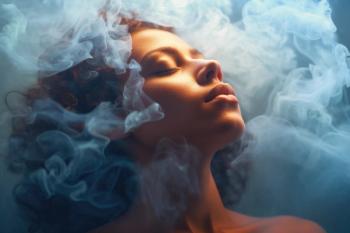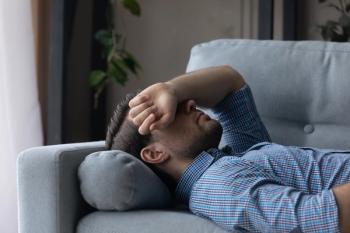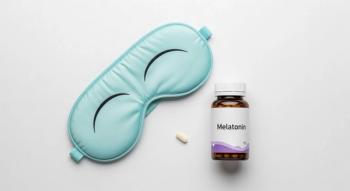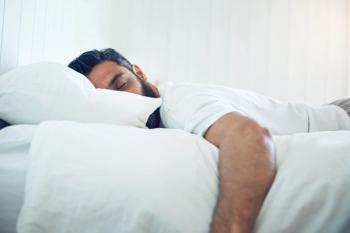
- Vol 30 No 7
- Volume 30
- Issue 7
Characteristics of Sleep Disorders in Women
This brief review addresses what is currently known about sleep problems in women. The main focus is on sleep issues that are particularly relevant to reproductive stages in a woman’s life cycle and therefore potentially linked to reproductive and/or hormonal factors.
[[{"type":"media","view_mode":"media_crop","fid":"15695","attributes":{"alt":"","class":"media-image media-image-right","id":"media_crop_1429663829078","media_crop_h":"0","media_crop_image_style":"-1","media_crop_instance":"783","media_crop_rotate":"0","media_crop_scale_h":"133","media_crop_scale_w":"160","media_crop_w":"0","media_crop_x":"0","media_crop_y":"0","style":"float: right;","title":" ","typeof":"foaf:Image"}}]]Being a woman is a risk factor for
This brief review addresses what is currently known about sleep problems in women. The main focus is on sleep issues that are particularly relevant to reproductive stages in a woman’s life cycle and therefore potentially linked to reproductive and/or hormonal factors. As such, some strategies for management that are specific to women will also be reviewed.
Menstrual cycle–related sleep disturbances
Sleep problems may emerge along with mild to moderate premenstrual symptoms or dysmenorrhea or may even accompany a more severe and disabling form of premenstrual disturbance-
Menstrual cycle–related sleep disturbances could be driven, at least in part, by changes in progesterone, prolactin, and melatonin dynamics. A recent
Improvement of sleep disturbances in women with premenstrual syndrome (PMS) or PMDD is commonly related to symptomatic relief-management of cramping, edema, or painful symptoms with diuretics and anti-inflammatory medications or antidepressants for depressed mood, anxiety, and irritability. In some cases, the use of continuous oral contraceptives is recommended for PMS/PMDD; the effects of oral contraceptives on sleep do not seem to be detrimental but need to be further investigated.5
It is important to highlight that some women might not experience isolated premenstrual problems; instead, they might present with a premenstrual exacerbation of an underlying psychiatric condition such as anxiety, depression, or bipolar disorder. Their complaints might, in fact, represent an exacerbation of sleep disturbances that are commonly associated with these underlying conditions. If well characterized, premenstrual exacerbation often requires a different treatment strategy, such as dose optimization of current therapies (eg,
Pregnancy and postpartum period
Sleep might be disrupted substantially and accompanied by significant physiological changes during pregnancy. Reports of sleep disturbances during pregnancy range from 15% to 80%, depending on the population studied and the time of assessment. Most women attribute their disrupted sleep during the first trimester to physical discomfort caused by nausea and vomiting as well as to stressors related to other factors (poor psychosocial support, unplanned pregnancy, etc). As pregnancy progresses through the second and third trimesters, there are increased awakenings and more fatigue, leg cramps, and shortness of breath.
Changes in sex hormones may contribute to the occurrence of
Upper airway resistance increases throughout pregnancy and may contribute to frequent arousals and subsequent daytime sleepiness. Restless legs syndrome is quite common in pregnancy and may be partially related to lower folate levels and iron deficiency-iron depletion occurs with fetal development, and standard iron supplementation during pregnancy is often insufficient. Nutritional supplements should thus be considered for symptomatic or at-risk individuals.
Midlife
Clinicians and patients are frequently puzzled by the complex interactions between sleep problems, aging, and menopause-related hormonal changes. Quite often it is difficult to determine whether sleep problems result from a primary disorder or are secondary to the emergence of hot flashes or depression. Perceived sleep problems (ie, decline in sleep quality) are commonly associated with depression, anxiety, or vasomotor symptoms. Objective sleep measures (polysomnographic studies) may also indicate a primary sleep disorder, such as obstructive sleep apnea or restless legs syndrome. In other words, sleep disturbances during the midlife years are quite frequently multifactorial.
The overall prevalence of
Sleep hygiene
Sleep problems may have a good response to nonpharmacological interventions, such as
Conclusion
Sleep problems are more common in women throughout the life cycle and, in some cases, are associated with or exacerbated by reproductive-related events. Underlying primary disorders, such as obstructive sleep apnea and restless legs syndrome, and psychiatric disorders, such as depression and anxiety, should always be investigated and ruled out. Quite often, concurrent treatment strategies are needed. For example, hormone therapy for the alleviation of hot flashes in symptomatic menopausal women in combination with antidepressants, hypnotics, or behavioral strategies may reduce the number and intensity of nocturnal hot flashes and improve sleep. A multiprofessional approach is recommended, particularly when sleep problems are accompanied by poorer quality of life and psychosocial impairment.
This article was acquisitioned and reviewed by Dr Karl Doghramji, Psychiatric Times Section Editor for Sleep Disorders. Dr Doghramji is Professor of Psychiatry, Neurology, and Medicine, and Medical Director of the Jefferson Sleep Disorders Center at Thomas Jefferson University in Philadelphia.
Disclosures:
Dr Soares is Researcher and Consultant and Former Professor in the department of psychiatry and behavioural neurosciences at McMaster University in Hamilton, Ontario. He reports no conflicts of interest concerning the subject matter of this article.
References:
1. Klink ME, Quan SF, Kaltenborn WT, Lebowitz MD. Risk factors associated with complaints of insomnia in a general adult population. Influence of previous complaints of insomnia. Arch Intern Med. 1992;152:1634-1637.
2. Soares CN. Insomnia in women: an overlooked epidemic? Arch Womens Ment Health. 2005;8:205-213.
3. Baker FC, Driver HS, Rogers GG, et al. High nocturnal body temperatures and disturbed sleep in women with primary dysmenorrhea. Am J Physiol. 1999;277(6, pt 1):E1013-E1021.
4. Shechter A, Lespérance P, Ng Ying Kin NM, Boivin DB. Nocturnal polysomnographic sleep across the menstrual cycle in premenstrual dysphoric disorder. Sleep Med. 2012;13:1071-1078.
5. Freeman EW, Halbreich U, Grubb GS, et al. An overview of four studies of a continuous oral contraceptive (levonorgestrel 90 mcg/ethinyl estradiol 20 mcg) on premenstrual dysphoric disorder and premenstrual syndrome. Contraception. 2012;85:437-445.
6. Lee KA, Gay CL. Sleep in late pregnancy predicts length of labor and type of delivery. Am J Obstet Gynecol. 2004;191:2041-2046.
7. Saletu B, Brandstätter N, Metka M, et al. Double-blind, placebo-controlled, hormonal, syndromal and EEG mapping studies with transdermal oestradiol therapy in menopausal depression. Psychopharmacology (Berl). 1995;122:321-329.
8. Montplaisir J, Lorrain J, Denesle R, Petit D. Sleep in menopause: differential effects of two forms of hormone replacement therapy. Menopause. 2001;8:10-16.
9. Gambacciani M, Ciaponi M, Cappagli B, et al. Effects of low-dose, continuous combined estradiol and noretisterone acetate on menopausal quality of life in early postmenopausal women. Maturitas. 2003;44:157-163.
10. Dorsey CM, Lee KA, Scharf MB. Effect of zolpidem on sleep in women with perimenopausal and postmenopausal insomnia: a 4-week, randomized, multicenter, double-blind, placebo-controlled study. Clin Ther. 2004;26:1578-1586.
11. Soares CN, Joffe H, Rubens R, et al. Eszopiclone in patients with insomnia during perimenopause and early postmenopause: a randomized controlled trial. Obstet Gynecol. 2006;108:1402-1410.
12. Frey BN, Haber E, Mendes GC, et al. Effects of quetiapine extended release on sleep and quality of life in midlife women with major depressive disorder. Arch Womens Ment Health. 2013;16:83-85.
13. Joffe H, Massler A, Sharkey KM. Evaluation and management of sleep disturbance during the menopause transition. Semin Reprod Med. 2010;28:404-421.
Articles in this issue
over 12 years ago
Discontinuing Medications: When, Why, and How-toover 12 years ago
Requiem for DSMover 12 years ago
Olanzapine/Fluoxetine Combination Affirmed for Bipolar Depressionover 12 years ago
Crime and Therapy: Good News About Pharmacotherapy for ADHDover 12 years ago
Late Last Nightover 12 years ago
The Dope on Medical Cannabis: Results of a Survey of Psychiatristsover 12 years ago
Obesity in Patients With Psychiatric ConditionsNewsletter
Receive trusted psychiatric news, expert analysis, and clinical insights — subscribe today to support your practice and your patients.

















